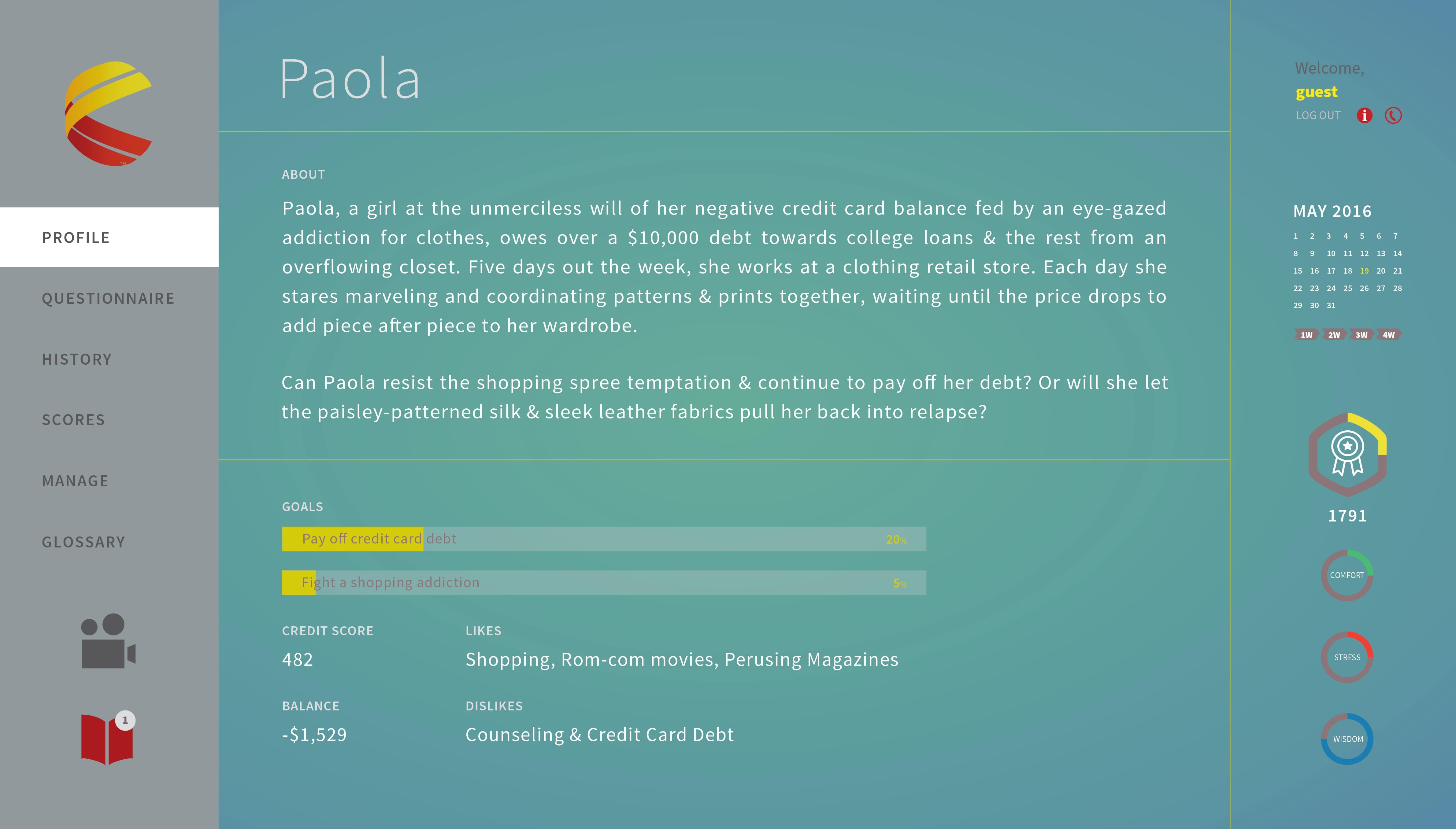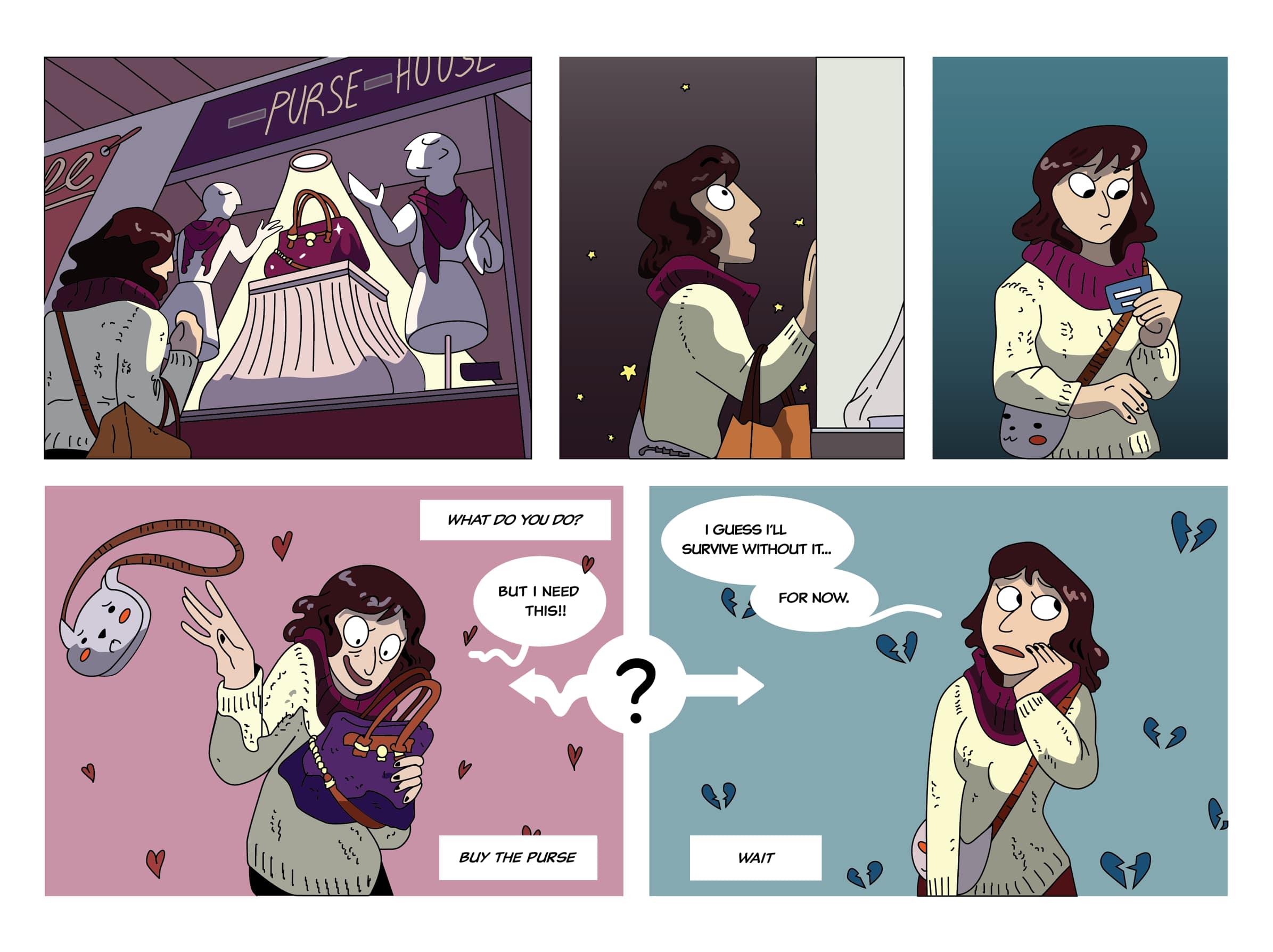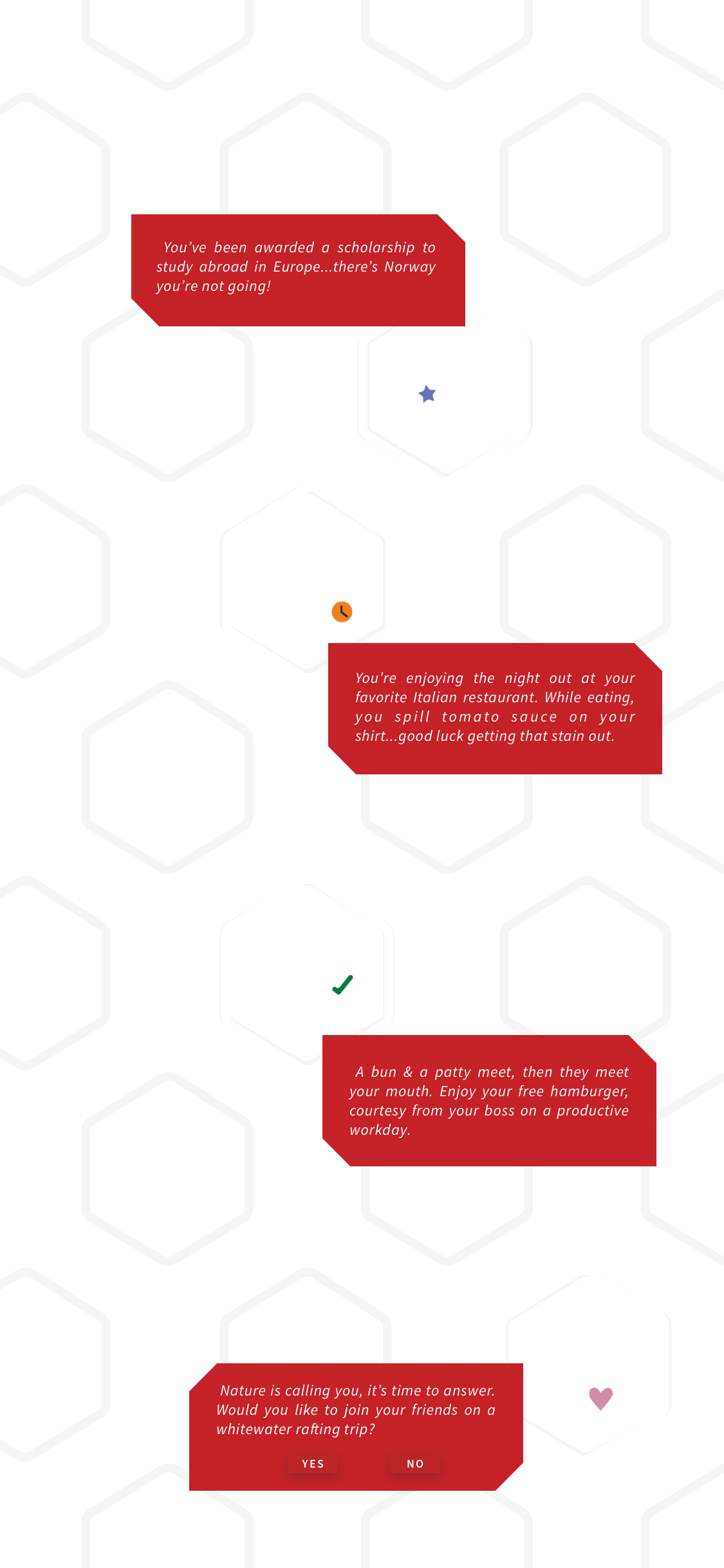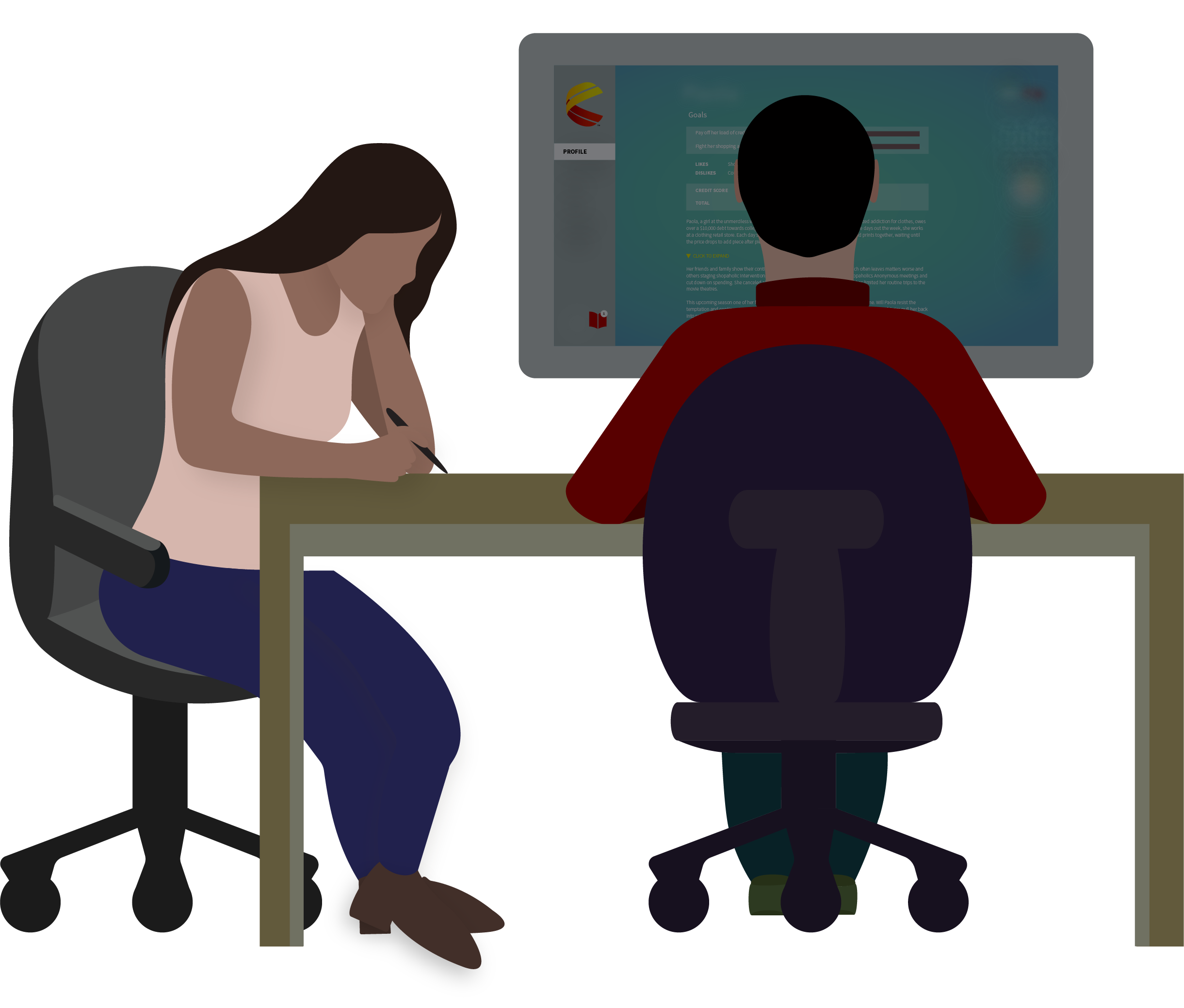Content Writing
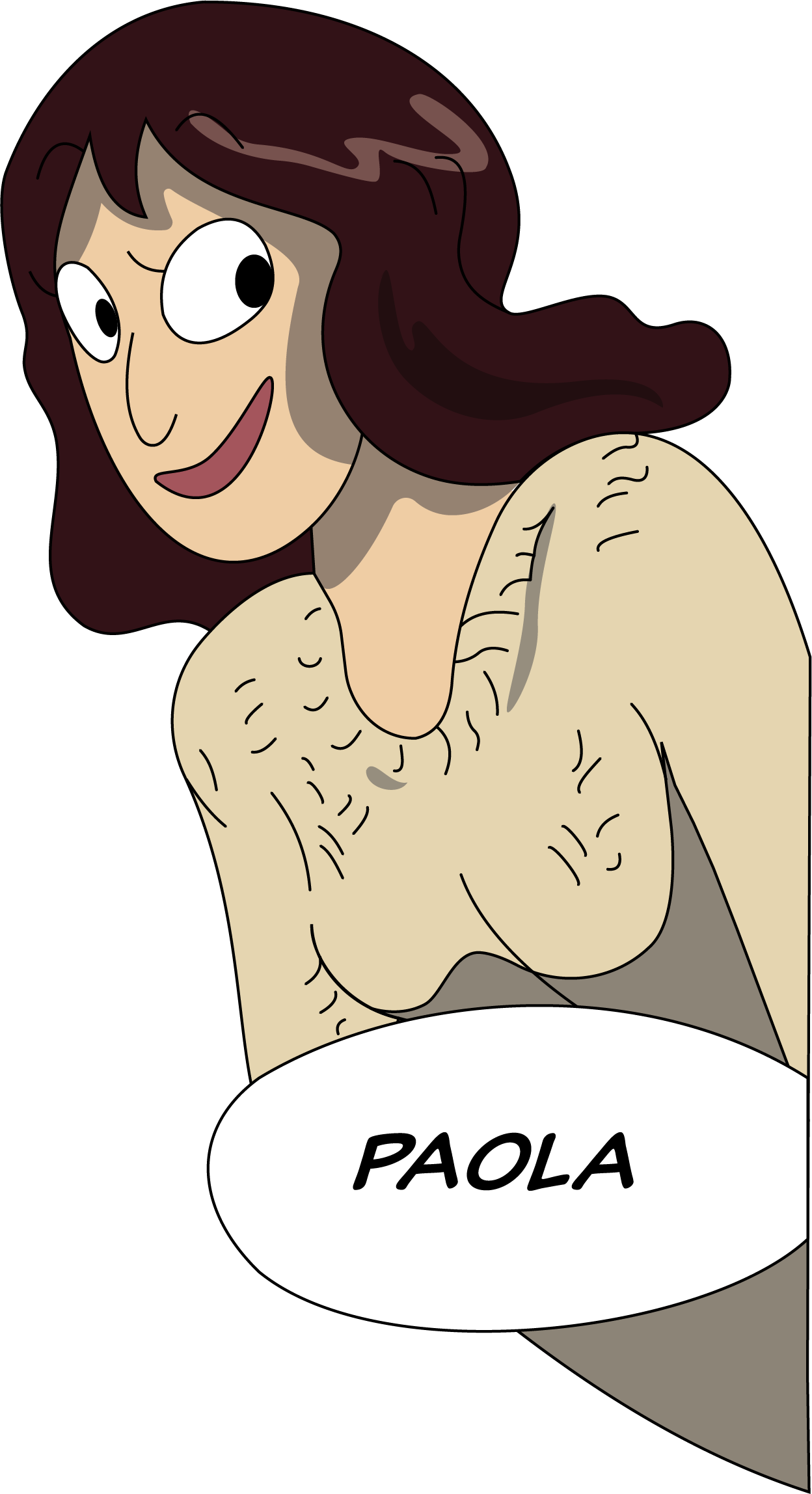
The Cheddar Bowl team surveyed over 200 representatives of the targeted demographic about their financial history to develop character storylines for a money management simulation. The following recurring concepts were addressed from the survey responses:
Each player is assigned a character & their character’s profile is intended to guide their decision-making process during gameplay. The following featured character, Paola, was written with high financial & emotional stress fueled by a shopping addiction.
risk
loans
investment
debt
credit
entrepreneurship
